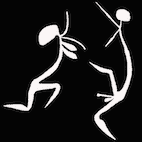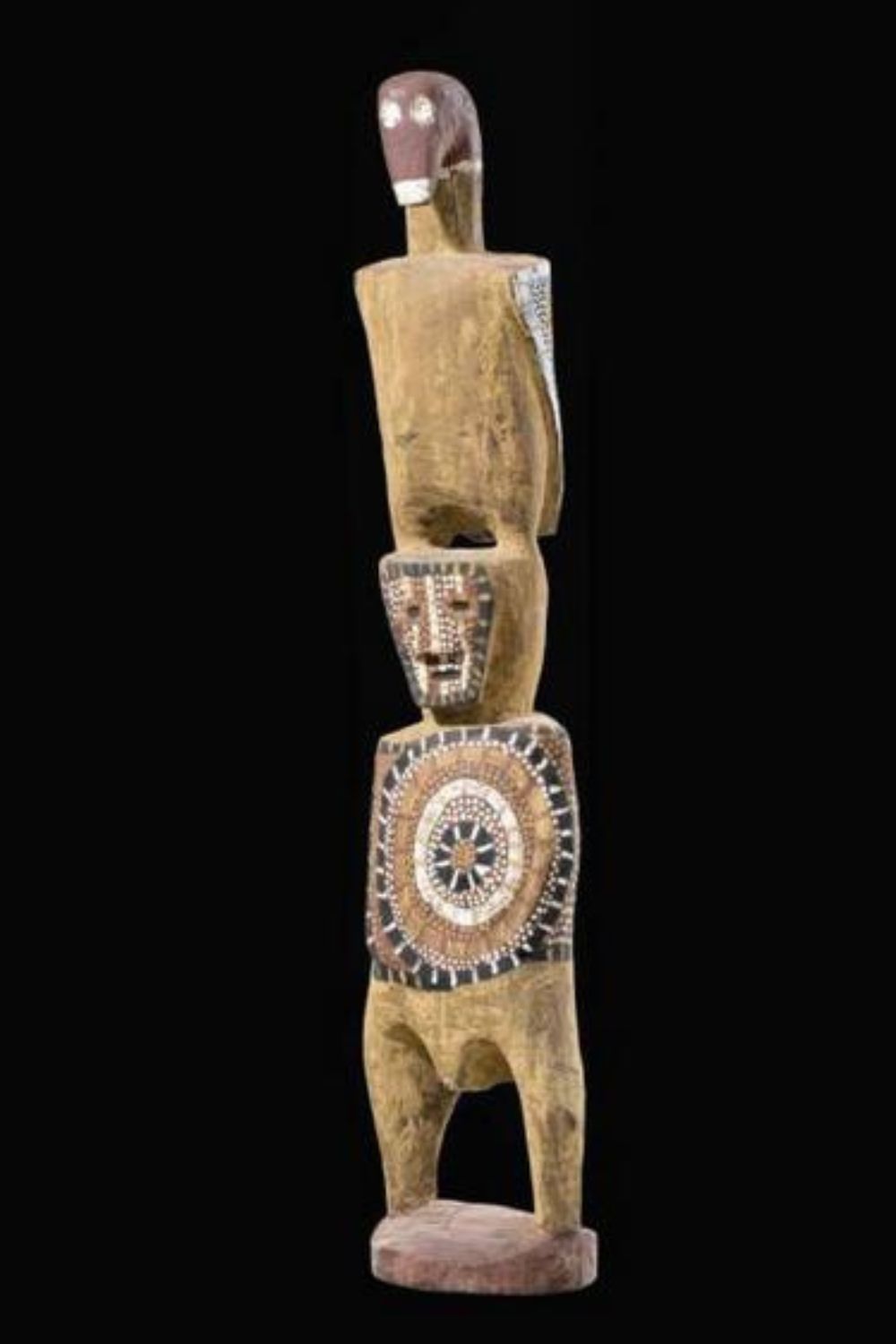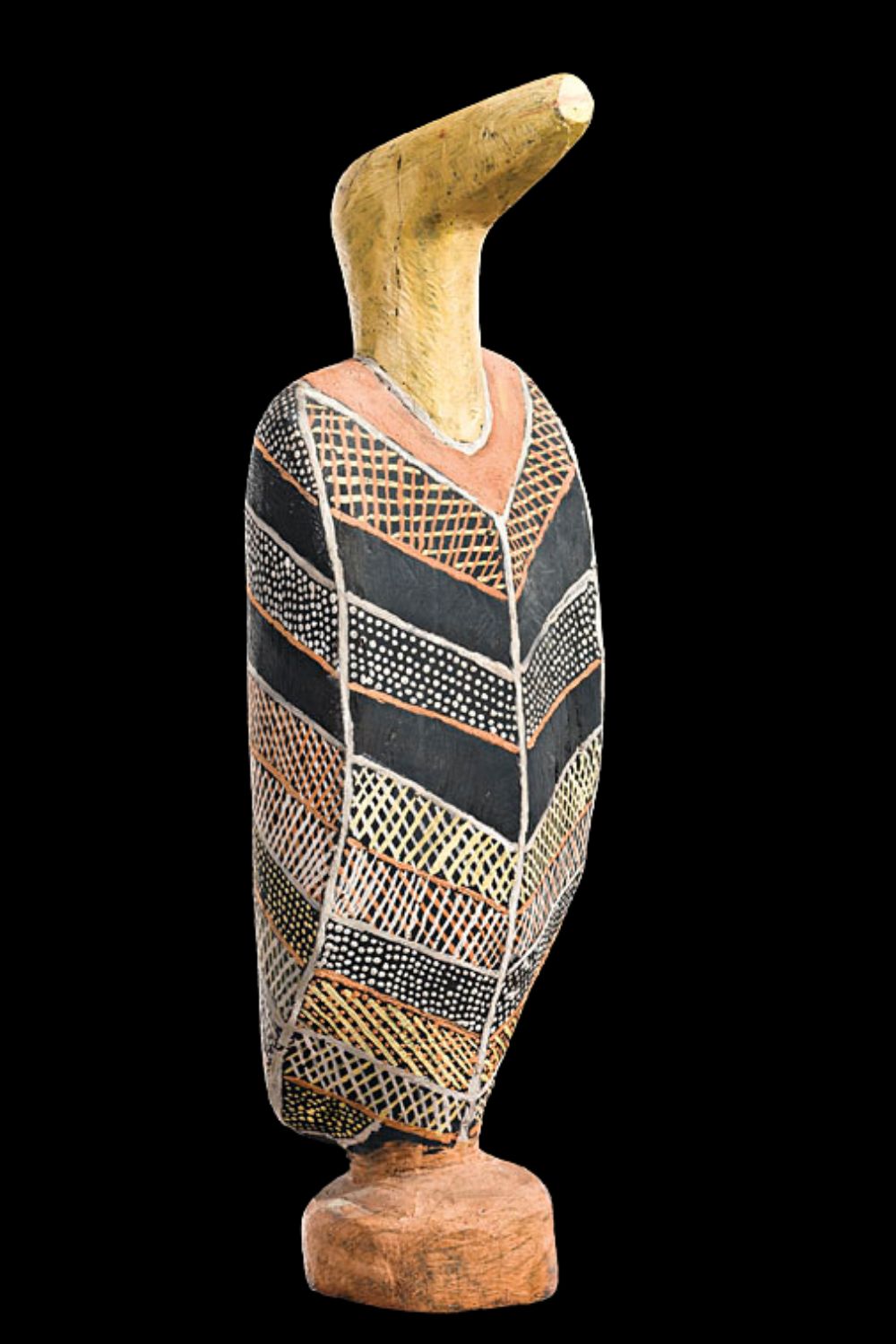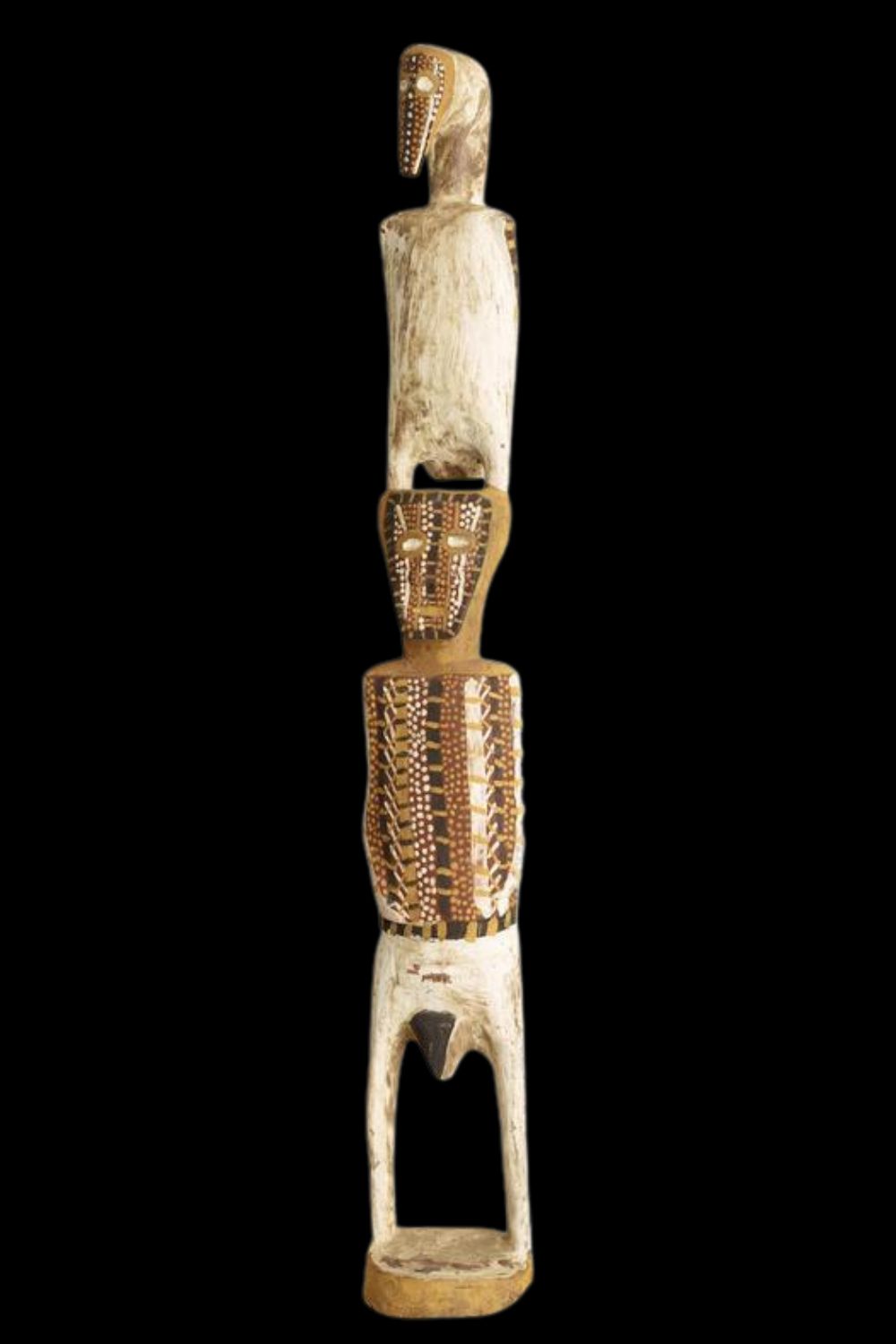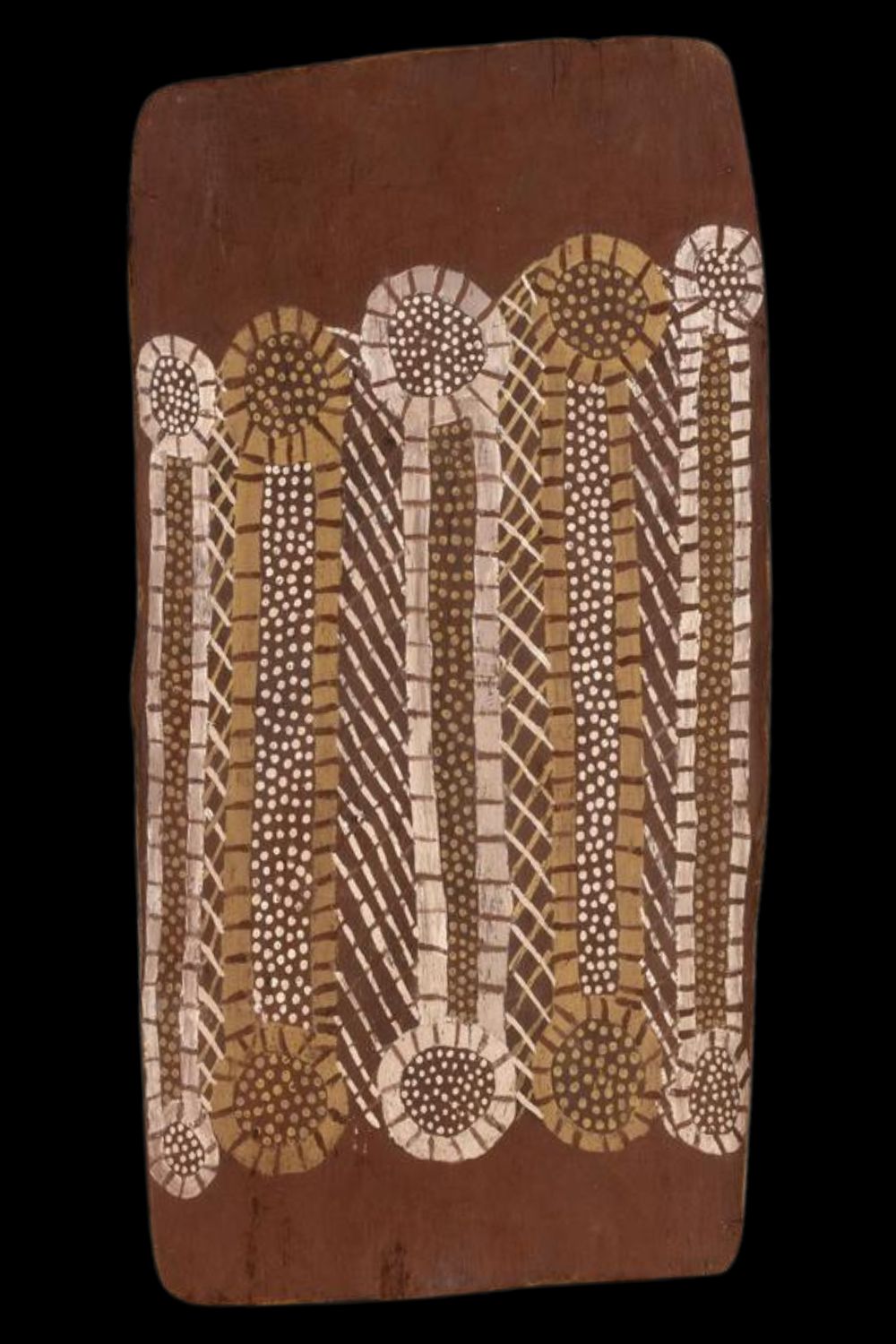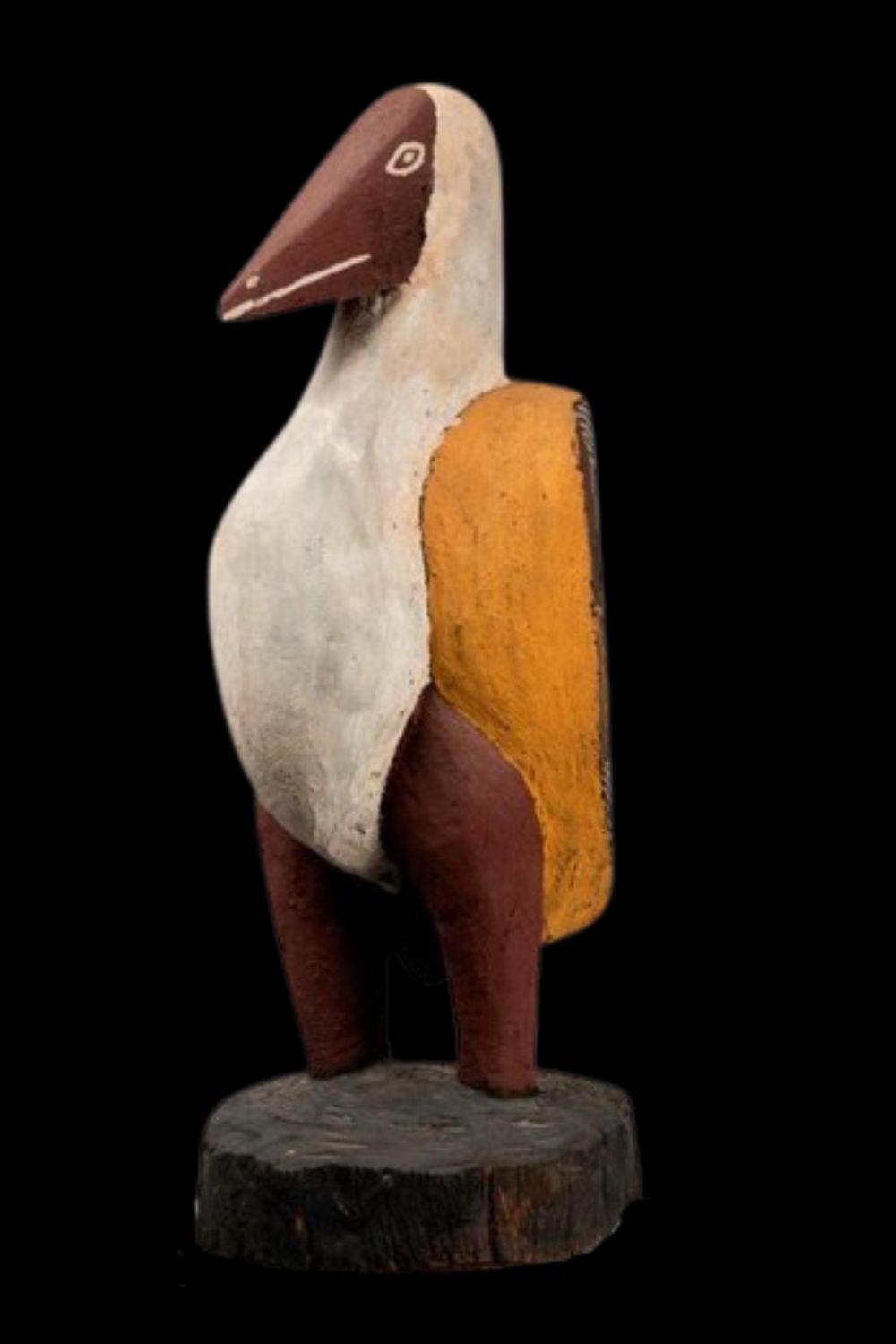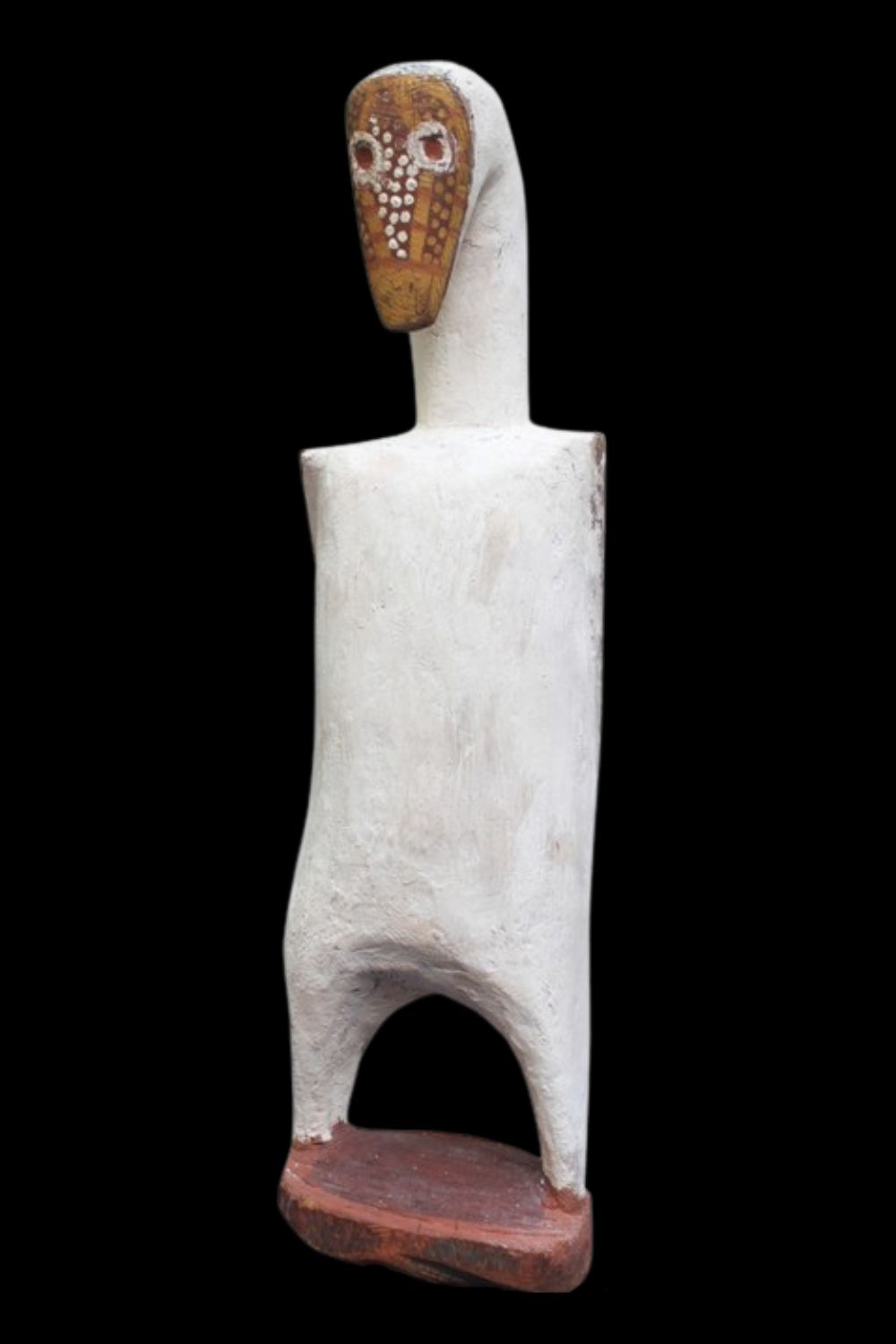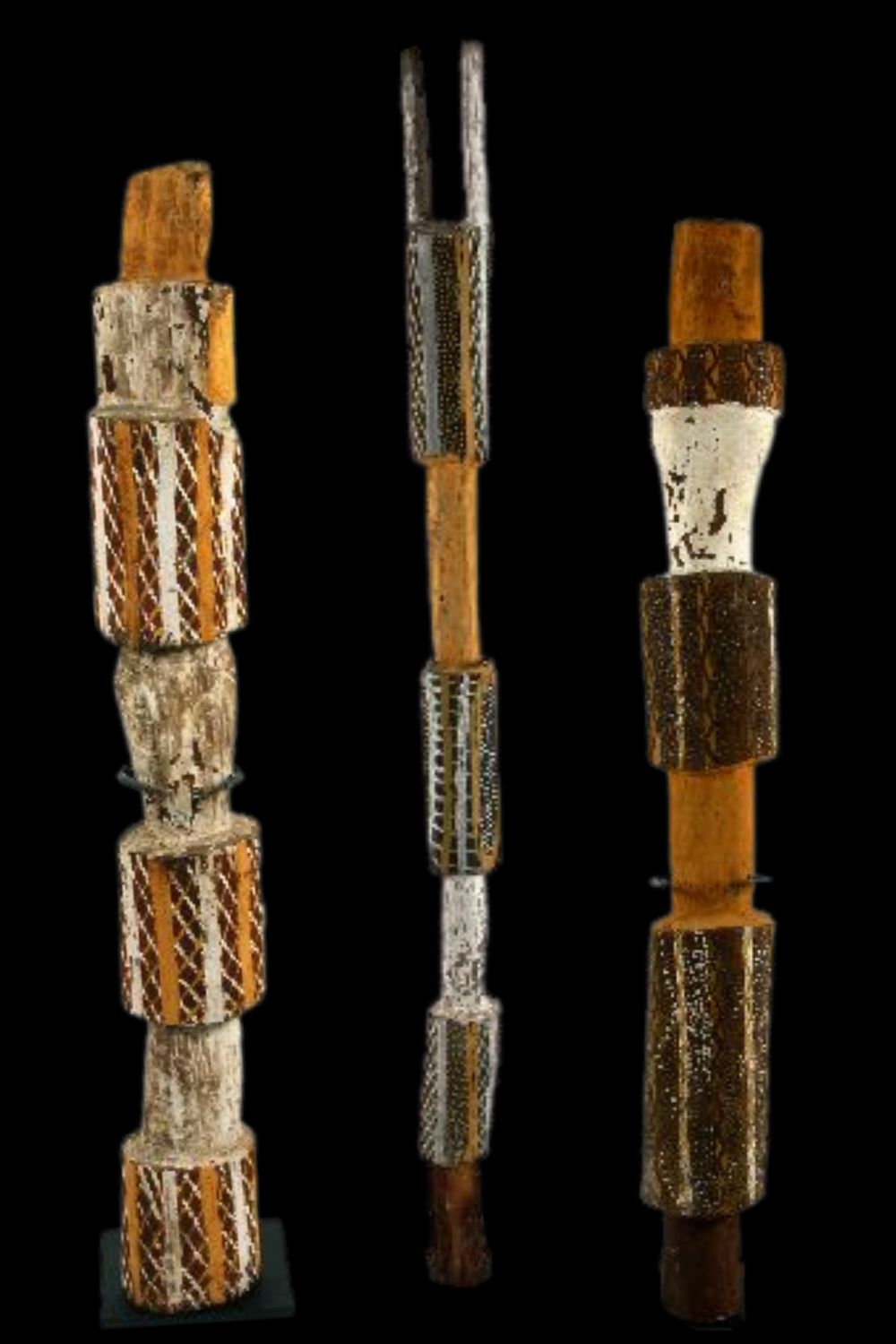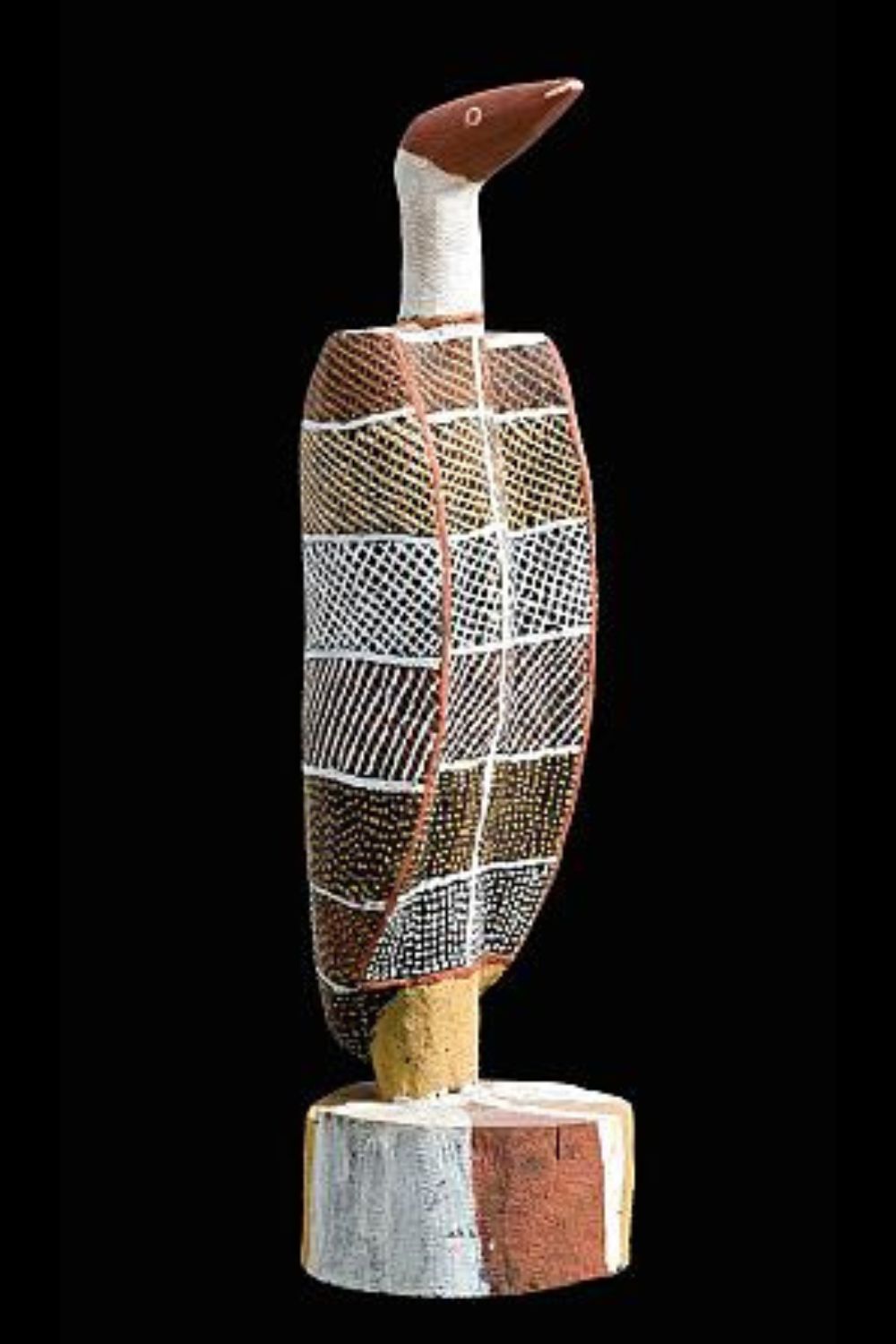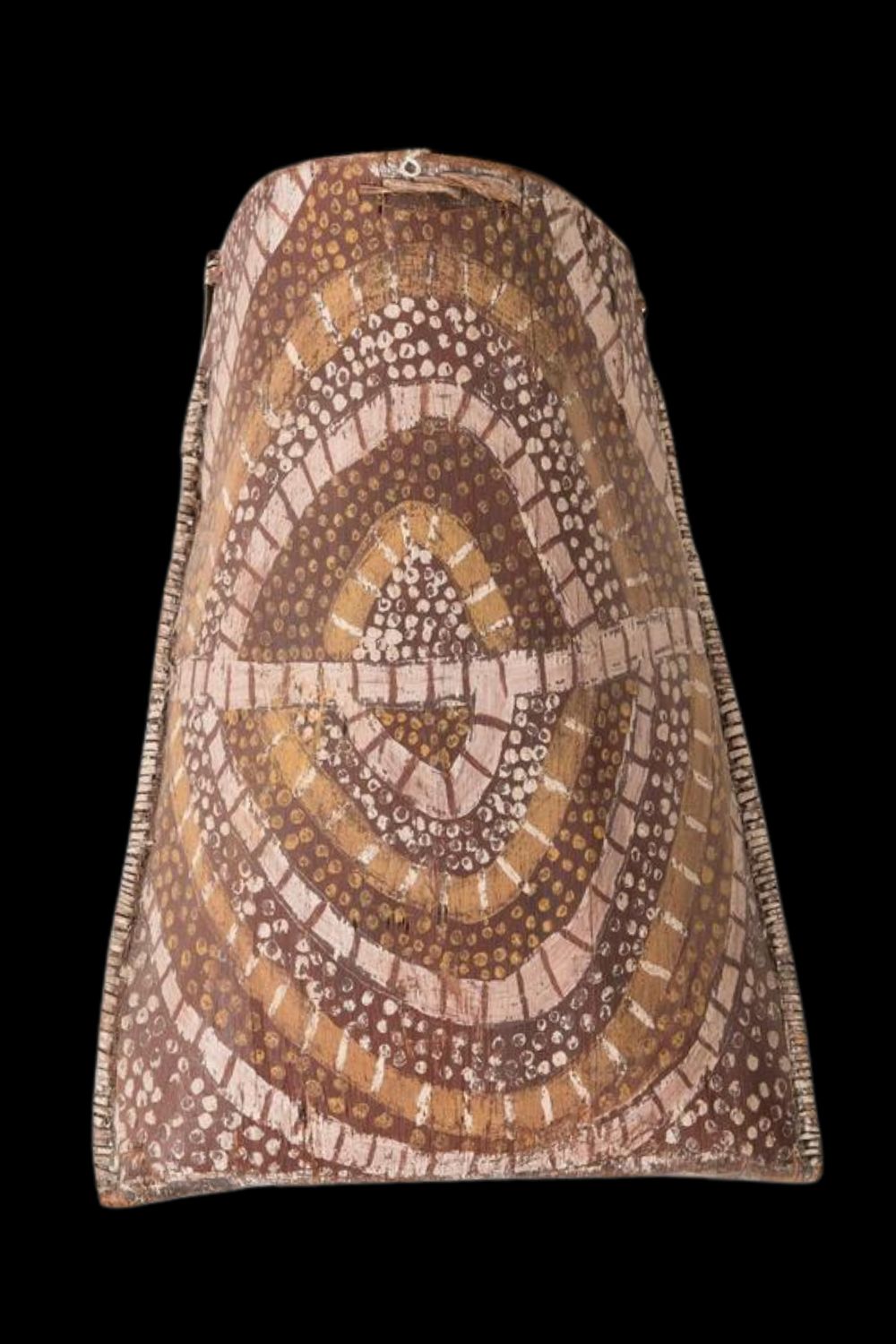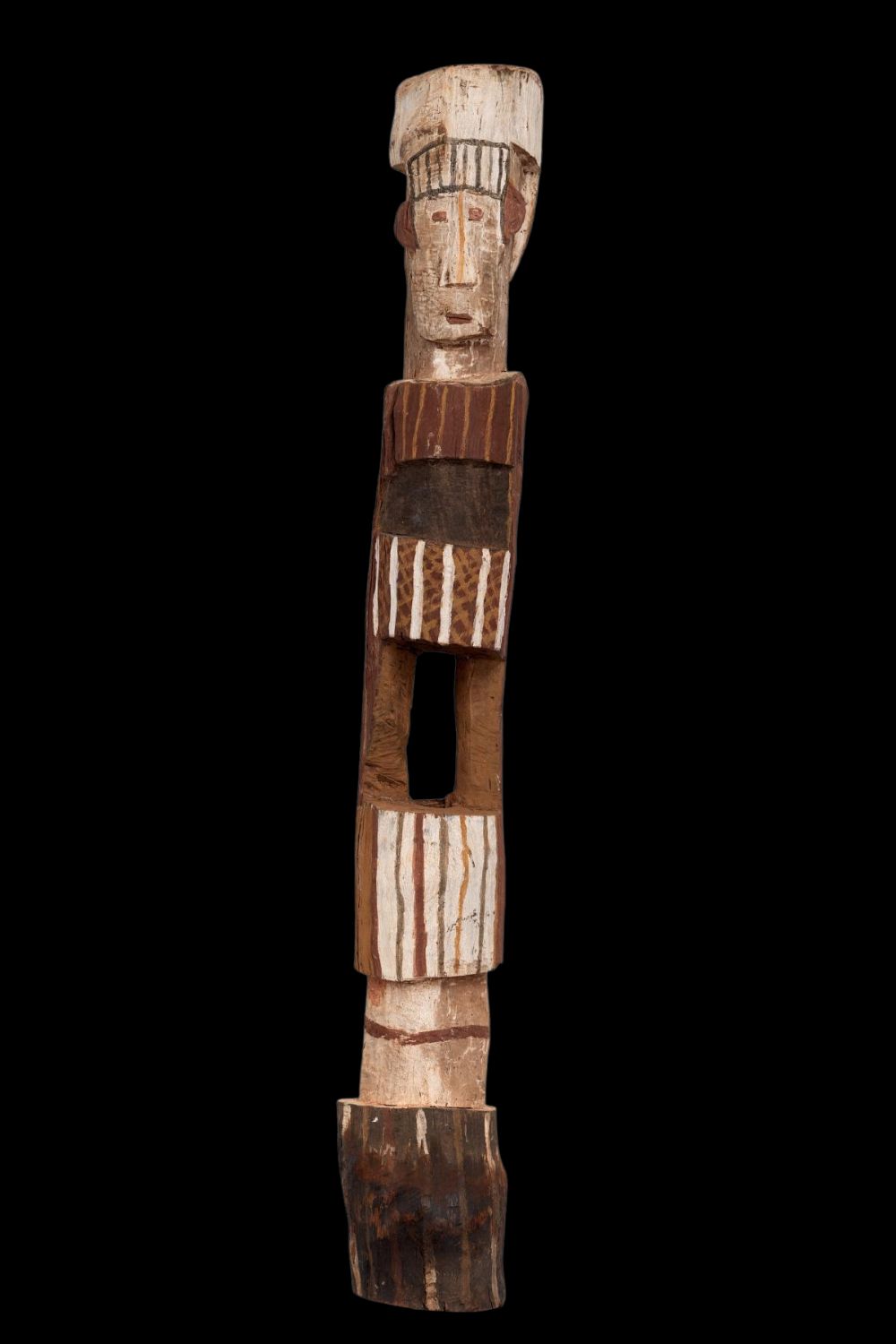Paddy Henry Ripijingimpi Teeampi – Master Carver of the Tiwi Islands
Paddy Henry Ripijingimpi Teeampi (c.1935–1993) stands as a significant figure in the canon of 20th-century Aboriginal art, celebrated for his deeply expressive Tiwi sculptures, bark paintings, and Pukumani poles. A cultural custodian and ceremonial artist, Ripijingimpi’s work encapsulates the rich ceremonial life and ancestral narratives of the Tiwi people, with a particular emphasis on Pukumani (mortuary) traditions.
As a highly regarded Tiwi artist active during the 1970s and 1980s, Ripijingimpi’s sculptural forms and painted works remain among the most sought-after examples of early Tiwi artistic practice. His pieces—often imbued with spiritual gravitas and symbolic meaning—offer collectors, scholars, and institutions a direct link to the Tiwi Islands’ ancient and evolving cultural heritage.
If you have a Ripijingimpi sculpture to sell please contact me. If you want to know what your Paddy Henry Ripijingimpi sculpture is worth please feel free to send me a Jpeg. I would love to see it.

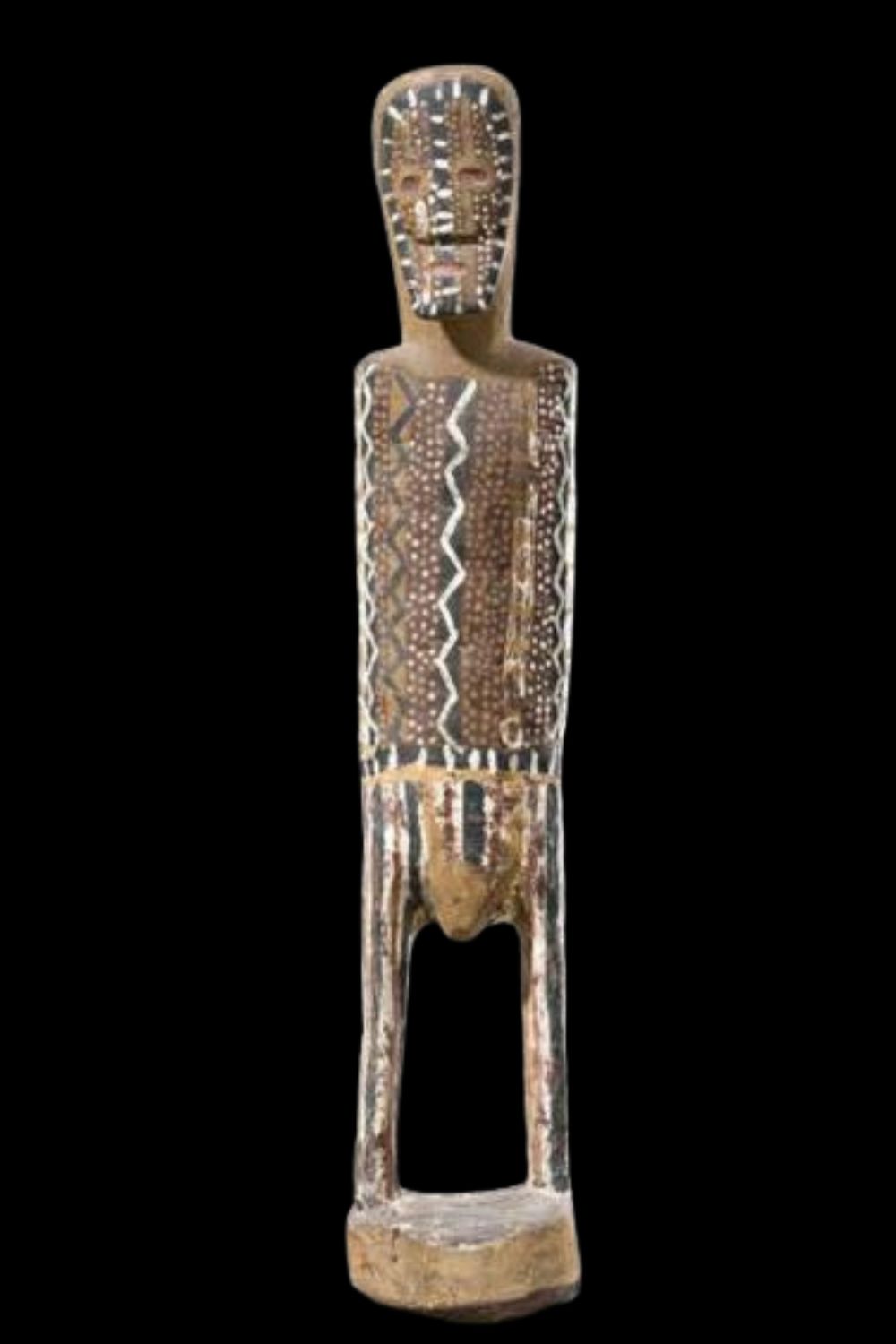
Style of paddy Ripijingimpi Teeampi
Paddy Henry Ripijingimpi sculptures have a chunky and crude blocky appearance. The face has Incised eyes and mouth. His painting on sculpture is often very fine. The sex on the figures is clearly shown. Paddy has also done several pukumani posts. His carved and painted sea birds are very distinctive and although crudely carved are amongst the best-painted examples.
Paddy has done at least three carvings of the sea bird perched on the spirit figures head.
His paintings on bark are designs of traditional body painting that the Tiwi use during the Pukumani ceremony.
Ripijingimpi works are of the Tiwi creation story. In the Tiwi version of creation, Bima, the wife of Purukapali, makes love to her brother in law while her son Jinani, is lying under a tree. As the sun moves the baby exposed to the full heat of the sun dies. Purukapali becomes enraged and after his wife transforms into a bird and he begins an elaborate mourning ceremony for his son. This was the first Pukumani (mortuary) ceremony and tells how death first came to the Tiwi Islands.
Biography of Paddy Henry Ripijingimpi
Born circa 1935, Paddy Henry Ripijingimpi hailed from the Tiwi Islands off the northern coast of Australia. While precise details of his life remain scarce, oral tradition and stylistic analysis suggest that he likely lived and worked within the Paru and Snake Bay communities, alongside other pioneering artists such as Enraeld Munkara Tommy Mungatopi and Ali Mungatopi.
He passed away in 1993, leaving behind a remarkable legacy not only in his own works but through his daughter, Nancy Henry Ripijingimpi, a Tiwi artist in her own right.
Ripijingimpi’s contributions helped define an era of Tiwi art that bridged traditional practices with the broader recognition of Aboriginal art on the national and international stage. His works are represented in major institutional collections and continue to appear in the secondary market, where they are highly collectible.
References and further reading
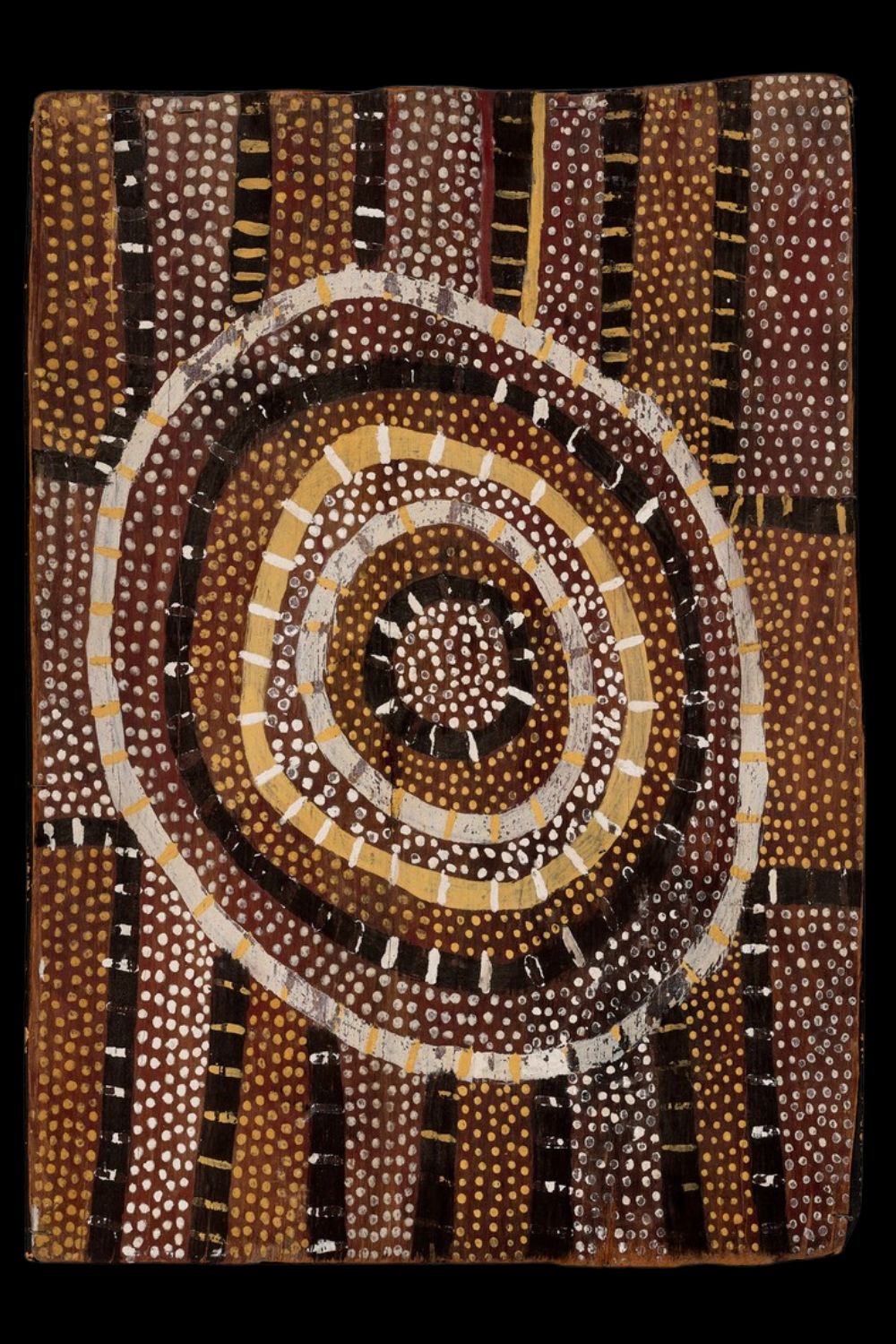
All images in this article are for educational purposes only.
This site may contain copyrighted material the use of which was not specified by the copyright owner.
Paddy Henry Ripijingimpi Art Images
The following images are not a complete list of the artist’s works but give some idea of his style and variety.
